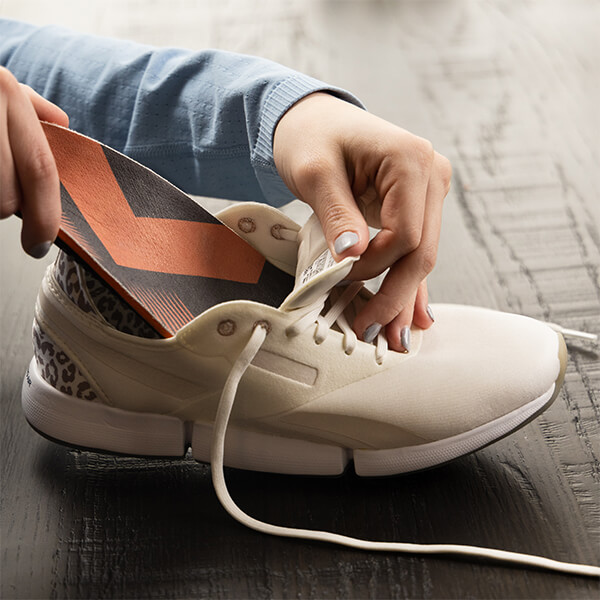4 Foot Surgeries, and 1 Simple Alternative

Foot surgeries come with hefty costs and complications compared to custom insoles.
When you truly need surgery, it’s important to get it. But when it comes to your feet, surgery should be the last resort. Foot surgery can take you out of commission for six to eight weeks, doesn’t always relieve foot pain, and comes with no guarantee your problems won't come right back.
But what are the common foot surgeries? It’s still smart to know the available surgeries, their costs, possible complications, and recovery times.
We'll explain four of the most common surgeries for foot issues. But if you want to skip surgeries, jump down to The No-Surgery Alternative.
1. Plantar Fasciitis Surgery
Plantar fasciitis is a painful condition that affects the sole of the foot and the heel. The plantar fascia is a thick band of tendons and muscles that runs along the sole from your heel to the base of your toes.
When the plantar fascia gets injured or inflamed, you’ll feel pain, especially when you first get up in the morning or stand after sitting.
What Happens in the Surgery?
You’ll go under general anesthesia or local anesthesia with sedation. The surgeon will open the foot and detach the plantar fascia from the heel. This is called a tendon release.
If you have bone spurs or trapped nerves, the surgeon can also fix those during the surgery.
Cost
This surgery can cost anywhere from about $3,500 to $8,000. Some locations, though, have charged around $10,000.
Your actual price tag will be based on your insurance plan and your specific medical case.
Recovery Time
After the surgery, you’ll usually be able to leave the hospital after a few hours. You’ll need someone else to drive you to your home, though.
Full recovery takes six to ten weeks. And you’ll need a cast, walking boot, or doctor-recommended pair of shoes while you heal.
Risks
It’s possible you could suffer an arch reduction after surgery and recovery—the arch of your foot wouldn’t be able to hold your weight as well or respond to impacts like it used to.
This surgery often works well, but some patients have also reported that the surgery doesn’t improve their foot pain completely—or the foot pain even stays the same.
Nerve damage can also happen, causing numbness in the foot. Or the wound area may become infected. Good hygiene is important after surgery.

2. Morton’s Neuroma Surgery
Morton’s neuroma is a painful inflammation in the ball of the foot. It creates a thickening of tissue around a nerve leading up to the toes. That can feel like there’s a pebble in your shoe—or even a burning pain or numbness.
What Happens in the Surgery?
There are several options:
- Your surgeon might release the pressure on the nerve by cutting nearby tissues, like the ligament that holds nearby bones together.
- The surgeon might completely remove the growth on the nerve—or the nerve itself. This can relieve the pain but might also leave the toes permanently numb.
- You may receive steroid or alcohol injections to relieve some of the pain.
Cost
Morton’s neuroma surgery costs about $3,000 to $8,800. Some locations, though, have charged around $10,000. A series of injections could cost you about $1,500 to $3,000. Remember, what you pay out-of-pocket depends on your insurance plan and specific case.
Recovery Time
Recovery is different for each person. Many patients need to wear a type of shoes that takes weight off of the ball of the foot for two to three weeks. Then, it takes about three to six weeks before the foot can carry your full weight.
It’s smart to avoid straining your feet for about two months, though. And it’s recommended that you wear flat-soled shoes with good arch support—and plenty of room for your toes.
Risks
There are two main risks:
- Around 35% of patients have post-surgical pain that is as bad as the pain before the surgery. Plus, it’s harder to find and treat the source of the pain after the first surgery, because the pain may be caused by a complication from the surgery, scar tissue, or several other sources.
- Some foot ligaments may have to be cut during surgery, making the foot unstable after surgery—sometimes creating long-term gait problems (the way you walk).
3. Bunion Surgery
A bunion is a painful bump near the base of the big toe. They appear gradually, often caused by arthritis, tight shoes, or other foot stress. They can cause foot stiffness and bone deformity.
What Happens in the Surgery?
Under local anesthetic or general anesthesia, your surgeon will take out some bits of bone, ligament, and/or tendon to relieve the bunion. He or she may also shave extra calcium off of the site. You’ll get stitches and a bandage afterwards.
Cost
There’s a wide range of possible prices for bunion surgery, from about $3,500 to $12,000, depending on your location. Remember, out-of-pocket expenses vary depending on your insurance and deductible policies.
Recovery Time
You may need to wear a brace or wound dressing for six to eight weeks. Your doctor will detail the activities you can and can’t do, like laying off of driving for one week or not wearing high heels for six months.
You might also be prescribed physical therapy and/or exercises to get your foot back in good working order.
Risks
Some patients have had these problems after bunion surgery:
- Swelling
- Infection
- Stiffness
- Numbness
- Nerve damage
- Delayed healing
- Burning sensation
- Decreased sensation
Unfortunately, a bunion can also come back, if the root cause of the bunion isn’t addressed.
4. Hammer Toe Surgery
A hammer toe is a condition in which the second, third, or fourth toe has an unusual bend in the middle joint. The toe can be painful, immobile, and/or callused. This might also cause sores.
What Happens in the Surgery?
Your surgeon could use one of two main techniques for a hammer toe surgery:
- Cutting the toe bones and inserting a pin into the toe to straighten it (removed after recovery)
- Transferring tendons between parts of the toe to straighten it
The surgeon may use a combination of techniques, depending on your case. Also, you may need surgery on more than one toe—focusing on just one foot at a time.
Cost
Hammer toe surgery costs about $3,300 to $11,500 (although price tags thousands of dollars higher have been reported). Remember, out-of-pocket expenses vary depending on your insurance and deductible policies.
Recovery Time
You might take one to six weeks off of work, depending on the type of job. Are you standing a lot? You’ll probably need more time off. Plus, driving may be difficult if surgery was on your right foot.
You might need help with household chores, childcare, and/or petcare. You won’t want to be on your feet too much for about six weeks.
Risks
This surgery is fairly successful in straightening the toe, but complications can include:
- A recurrence of hammer toe
- A pin or other device coming loose
- A feeling of instability in the area of the toe
The No-Surgery Alternative
Custom insoles are among the top alternatives to foot surgery. Doctors recommend them for delaying or even preventing surgery, for some patients. They offer you:
- Shortened Recovery Time: Surgery may keep you away from normal activities, such as work, for weeks or months. In contrast, custom insoles could help you keep walking without taking time away from work or activities you love.
- A True Solution: Foot issues are often caused by your foot shape or activities. Surgery may temporarily relieve the issue—until it comes back because the true cause was not addressed. But custom insoles can actually move your feet into healthier positions with every step.
Clinical professionals often recommend orthotic shoe insoles as a treatment to help with issues that include:
- Plantar fasciitis
- Morton’s neuroma
- Hammer toes
- Heel spurs
- Flat feet
- Bunions
- Supination
- Overpronation
You’ll get the best results if your insoles are crafted specifically for your feet and your particular issue. A good manufacturer can add features specifically for each of the conditions above.
Using Insoles to Improve Surgery Results
Custom shoe insoles could improve your recovery after surgery—using the two solutions in combination. Let’s look at bunions as an example.
Cause of Bunions
Bunions can have different causes but a common one is the foot rolling inward more than necessary (overpronation). If you have this issue, your foot is flattening too much during each step, causing you to push off of the inside of your big toe.
This causes repeated irritation and forms a bunion.
Solution
A custom insole will hold up your foot arch, preventing the foot from flattening too far. This keeps your toes pointing forward, taking the pressure off of the big toe.
Insoles can’t cure a bunion that has already formed. You may still need surgery to correct it.
But if your bunion was caused by flat feet, then custom shoe arch support could prevent pain associated with the bunion and help prevent it from worsening or from forming again. Your orthotist and doctor or surgeon can advise you on your specific case.
Protect Your Feet With Custom Insoles
When you get orthotic insoles that are molded exactly for your feet, they will help align your foot muscles and bones with each step. This can protect your toes, ankles, knees, hips, and more.
Insoles might do more than you expect. For example, if you get custom insoles to prevent a bunion from coming back, the arch support could also relieve pressure on your plantar fascia at the same time—and much more.
Are custom insoles right for you? Find out for free. Just answer the simple questions found here. Our system will give you your results instantly and tell you the next steps to getting your perfect pair.



